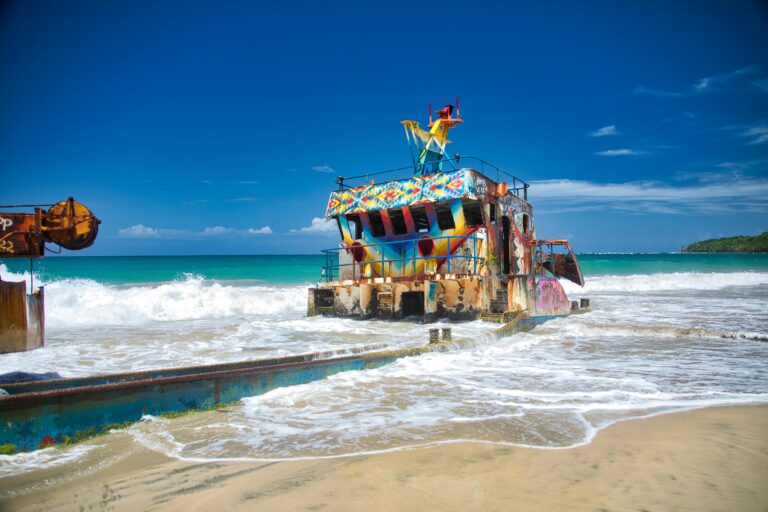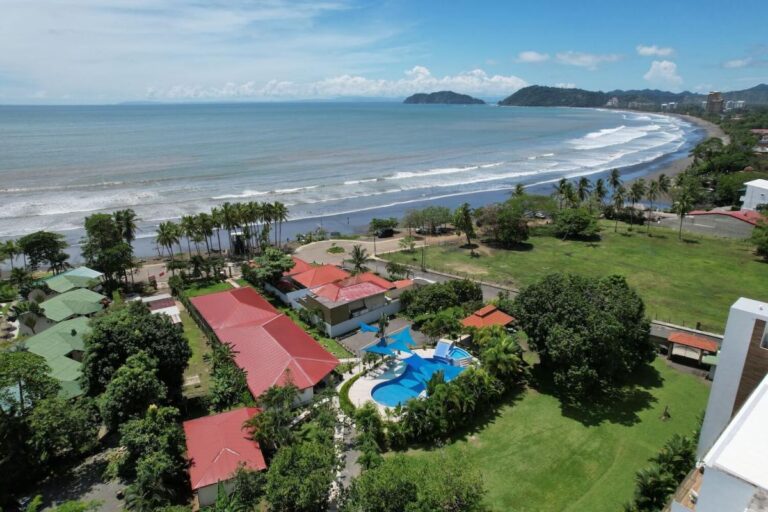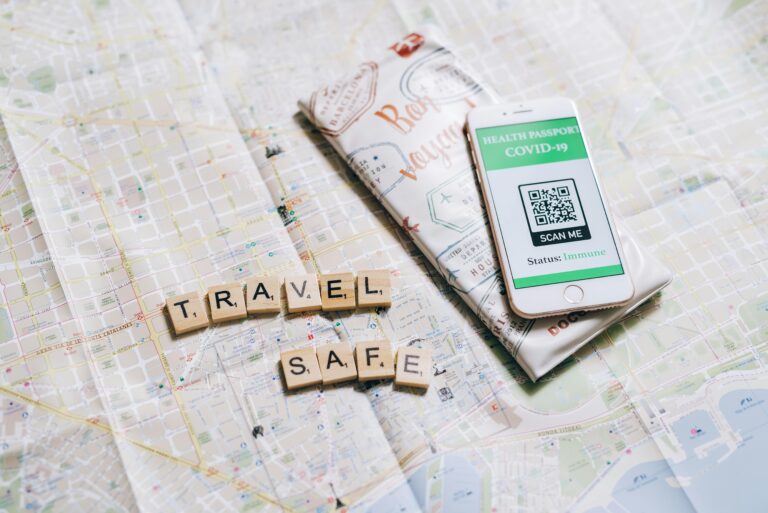Will My Phone Work in Costa Rica?
Planning a trip to Costa Rica? You’re probably wondering if your phone will work in this tropical paradise. This comprehensive guide explains everything you need to know about using your phone in Costa Rica. We’ll cover network compatibility, SIM cards, and provide detailed tips for staying connected during your visit. By the end of this article, you’ll be well-prepared to use your phone in Costa Rica without any hassles.
Understanding Costa Rica’s Mobile Networks
Major Carriers in Costa Rica
Costa Rica has three main mobile carriers: Kölbi, Movistar, and Claro. These companies provide cellular service throughout the country. Kölbi, owned by the state telecommunications company ICE, is the largest provider. Movistar and Claro are private companies that entered the market more recently. Your phone’s compatibility with these networks depends on its technology and frequency bands.
Kölbi offers extensive coverage across Costa Rica. It’s known for its reliability and strong presence in rural areas. Many locals prefer Kölbi for its nationwide reach.
Movistar provides competitive rates and good coverage in urban areas. They often have attractive plans for tourists and offer 4G LTE in many popular destinations.
Claro is another solid option with growing coverage. They’re known for competitive pricing and expanding their 4G LTE network rapidly.
Network Technology
Costa Rica uses GSM technology for its mobile networks. GSM (Global System for Mobile Communications) is the most widely used cellular technology worldwide. Most modern smartphones support GSM. If you have a CDMA-only phone, typically from carriers like Verizon or Sprint in the United States, it won’t work in Costa Rica. Check your phone’s specifications to confirm it supports GSM.
Phone Compatibility
Frequency Bands
Costa Rica’s networks operate on specific frequency bands. Your phone needs to support these bands to work in the country. The main bands used in Costa Rica are 2G: 850 MHz and 1800 MHz, 3G: 850 MHz and 2100 MHz, and 4G LTE: 1800 MHz and 2600 MHz. Check your phone’s specifications to see if it supports these bands. Most modern smartphones work on multiple bands and will likely be compatible.
2G is still used in some rural areas of Costa Rica. If your phone supports 850 MHz and 1800 MHz, you’ll be able to make calls and send texts even in remote locations. 3G provides faster data speeds than 2G. With support for 850 MHz and 2100 MHz, you’ll have access to 3G services in many parts of the country. 4G LTE offers the fastest mobile data speeds. Phones that support 1800 MHz and 2600 MHz will have access to 4G LTE in major cities and tourist areas.
Unlocked Phones
Your phone must be unlocked to use a local SIM card in Costa Rica. An unlocked phone can work with any carrier’s SIM card. Many phones purchased through carriers are “locked” to that specific carrier. Contact your home carrier to unlock your phone before your trip. Some carriers may charge a fee for this service or require that your phone is fully paid off.
To check if your phone is unlocked, try inserting a SIM card from a different carrier. If the phone recognizes the new carrier, it’s likely unlocked. If it says “Invalid SIM” or doesn’t recognize the new network, it’s probably locked.
Options for Using Your Phone in Costa Rica
International Roaming
Many carriers offer international roaming plans. These plans allow you to use your home number in Costa Rica. Check with your carrier for pricing and coverage details. Roaming can be convenient but often costs more than local options.
Roaming has several advantages. You can keep your home number, there’s no need to swap SIM cards, and it’s easier to manage for short trips. However, there are also disadvantages. It’s usually more expensive than local options, may have data speed limitations, and there’s a risk of unexpected charges if plan limits are exceeded.
Local SIM Cards
Buying a local SIM card in Costa Rica is often the most affordable option. You can purchase SIM cards at the airport, phone stores, or convenience stores. Bring your passport, as it’s required for SIM card registration.
You can buy SIM cards at Juan Santamaría International Airport (SJO) in San José, Daniel Oduber Quirós International Airport (LIR) in Liberia, Kölbi, Movistar, or Claro stores in major cities, and some convenience stores and supermarkets. To buy a SIM card, you’ll need your passport, an unlocked phone, and cash or a credit card for payment.
Prepaid Plans
Prepaid plans are popular among tourists in Costa Rica. These plans offer flexibility and control over your spending. You can buy credit as needed for calls, texts, and data.
Prepaid plans work by first buying a SIM card with initial credit. Then you choose a plan or package that suits your needs. You use your credit for calls, texts, and data, and recharge your credit when it runs low. The advantages of prepaid plans include no contract or commitment, easy control of spending, and flexible options for different usage needs.
Setting Up Your Phone in Costa Rica
Inserting a Local SIM Card
To use a Costa Rican SIM card, follow these steps: Turn off your phone. Locate the SIM card slot (usually on the side or under the battery). Use the SIM ejector tool or a paperclip to open the SIM tray. Remove your home SIM card (store it safely). Insert the Costa Rican SIM card into the tray. Replace the SIM tray in your phone. Turn on your phone.
Activating Your Service
After inserting the SIM card, you’ll need to activate it. This process usually involves dialing a number or sending a text message. The SIM card package will include instructions in English and Spanish.
Typical activation steps include powering on your phone with the new SIM card inserted, waiting for the network to be detected, following the activation instructions provided (usually dialing a code or sending an SMS), setting up your voicemail if desired, and configuring your APN settings for data access (instructions usually provided).
Internet Access in Costa Rica
Mobile Data
Mobile data is widely available in Costa Rica. 4G LTE coverage is good in cities and tourist areas. Rural areas may have slower 3G or 2G connections. Check coverage maps before traveling to remote locations.
Data speeds vary depending on the network. 4G LTE can reach up to 100 Mbps in ideal conditions. 3G speeds go up to 7.2 Mbps, while 2G is limited to 236.8 Kbps. Popular data packages include daily plans (ideal for short stays), weekly plans (good for vacations), and monthly plans (best for longer visits).
Wi-Fi Availability
Many hotels, restaurants, and cafes in Costa Rica offer free Wi-Fi. This option can help you save on mobile data usage. Always use caution when connecting to public Wi-Fi networks to protect your personal information.
You can find Wi-Fi in hotels and resorts, cafes and restaurants, shopping malls, and some public parks in major cities. For Wi-Fi safety, use a VPN when accessing sensitive information, avoid online banking or shopping on public networks, and turn off auto-connect to Wi-Fi networks.
Tips for Using Your Phone in Costa Rica
Conserving Battery Life
Costa Rica’s warm climate can drain your phone’s battery faster. Bring a portable charger or power bank to keep your phone charged. Turn off features like Bluetooth and GPS when not in use to save battery life.
Battery-saving strategies include lowering screen brightness, using airplane mode in areas with poor signal, closing background apps, and avoiding leaving your phone in direct sunlight.
Protecting Your Phone
Costa Rica’s humid climate and outdoor activities can put your phone at risk. Use a waterproof case to protect your device from moisture and sand. Consider travel insurance that covers electronics for added peace of mind.
To protect your phone, use a waterproof case for beach visits and water activities, avoid exposing your phone to extreme temperatures, keep your phone in a dry bag when hiking in rainforests, and use a screen protector to prevent scratches.
Learning Key Spanish Phrases
Knowing a few Spanish phrases can help you navigate phone-related issues. Learn words like “teléfono” (phone), “SIM” (SIM card), and “internet” to communicate with local staff.
Useful phone-related Spanish phrases include “¿Dónde puedo comprar una tarjeta SIM?” (Where can I buy a SIM card?), “Necesito recargar mi teléfono” (I need to recharge my phone), “¿Hay Wi-Fi aquí?” (Is there Wi-Fi here?), and “Mi teléfono no funciona” (My phone is not working).
Staying Connected Safely
Avoiding Roaming Charges
Turn off data roaming on your phone to prevent unexpected charges. Use Wi-Fi when possible and monitor your data usage closely. Set up spending limits with your home carrier as an extra precaution.
To disable data roaming on an iPhone, go to Settings > Cellular > Data Roaming and turn it off. For Android, go to Settings > Network & Internet > Mobile Network > Roaming and turn it off.
Using Secure Connections
When accessing sensitive information, use a VPN (Virtual Private Network) for added security. Avoid logging into bank accounts or making online purchases on public Wi-Fi networks.
VPNs offer several benefits. They encrypt your internet traffic, hide your IP address, and allow access to geo-restricted content.
Making the Most of Your Phone in Costa Rica
Using Local Apps
Download apps that can enhance your Costa Rica experience. From navigation to translation, these apps can make your trip smoother and more enjoyable.
Recommended apps include Waze for navigation (it’s very popular in Costa Rica), WhatsApp for messaging and calls, Google Translate for help with language barriers, and XE Currency for easy currency conversion.
Embracing Local Culture
While staying connected is important, remember to balance phone use with experiencing Costa Rica’s rich culture and natural beauty.
For phone etiquette, put your phone away during meals and social interactions. Ask permission before taking photos of people or private property. Use headphones when listening to music or videos in public. Most importantly, be present and enjoy the moment, especially in natural settings.
Conclusion
Your phone will likely work in Costa Rica with some preparation. By understanding network compatibility, choosing the right connection option, and following our tips, you can stay connected throughout your trip. Whether you’re sharing photos of stunning beaches, navigating through lush rainforests, or keeping in touch with loved ones back home, your phone can enhance your Costa Rican adventure.
Remember, while staying connected is convenient, the real joy of visiting Costa Rica lies in its natural wonders and warm, friendly people. Use your phone as a tool to enrich your experience, but don’t let it distract you from the amazing sights, sounds, and experiences that await you in this Central American paradise.
With this guide, you’re well-equipped to use your phone effectively in Costa Rica. Enjoy your trip, stay connected, and create unforgettable memories in this beautiful country!
Stay Connected on Your Costa Rican Adventure
Make your Costa Rican trip even better by staying connected! Use our tips to ensure your phone works perfectly, whether you’re at the beach or in the rainforest.
For more travel tips and special deals, visit explorecostaricanow.com. Need help? Contact us at:
- Email: info@jacovip.com
- Phone: 800-676-0717
Costa Rica is an amazing place. Let’s make your trip unforgettable!







